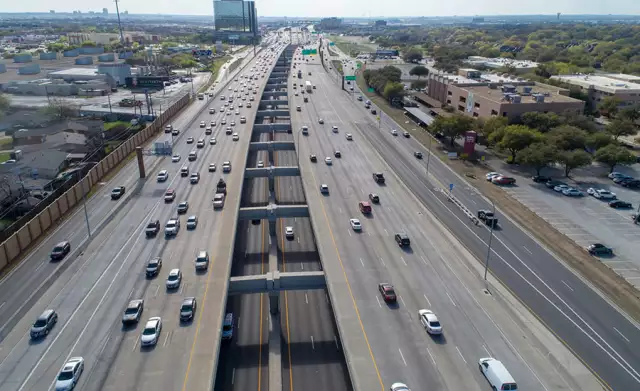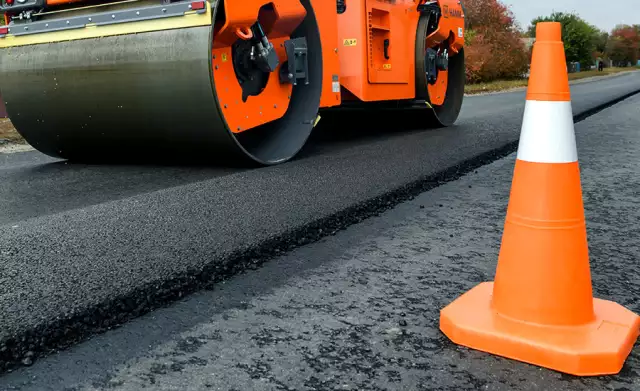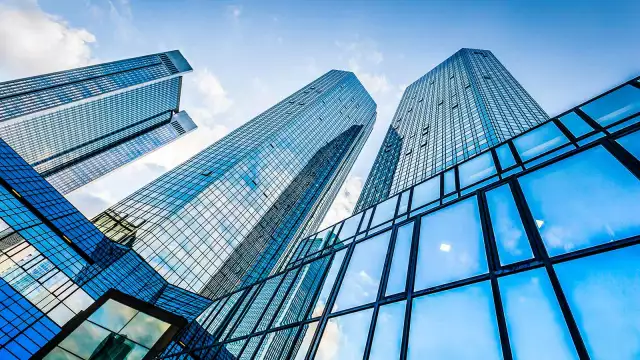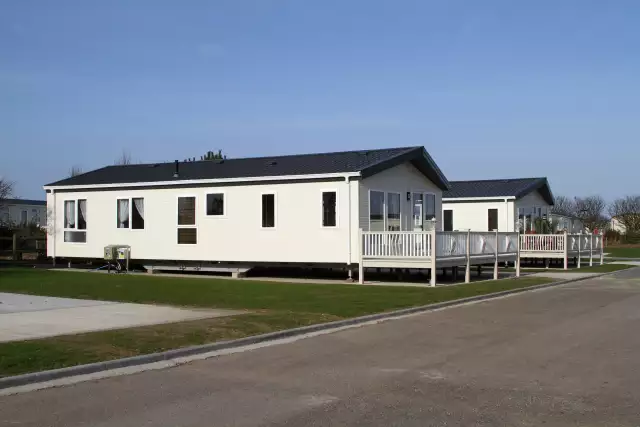Case Study in Pioneering Engineering Design and Infrastructure Financing
Case Study in Pioneering Engineering Design and Infrastructure Financing
May 19, 2022
Order Reprints
.contentprovided{
float: right;
margin: 0 0 10px 10px;
width: 200px;
}
@media only screen and (max-width: 500px) {
.contentprovided {
float: none;
margin: 20px auto 20px auto;
}
}
.pullquote{
width: 250px;
padding: 20px;
}
.pullquote a:link{
border-bottom: none;
}
.pullquote a:hover{
border-bottom: 1px solid #000000;
}
.pullquote a:visited{
border-bottom: none;
}
.pullquote h4{
font-family: ariel, helvetica, sans-serif;
}
.pqfloatleft{
float: left;
margin: 0 15px 10px 0;
border-right: 4px solid #d91920;
text-align: right;
}
.pqfloatright{
float: right;
margin: 0 0 10px 15px;
border-left: 4px solid #d91920;
}
@media only screen and (max-width: 600px) {
.pullquote{
margin: 20px auto 20px auto;
width: 250px;
display: block;
}
.pqfloatleft{
float: none;
border-right: none;
border-top: 2px solid #d91920;
border-bottom: 2px solid #d91920;
text-align: center;
}
.pqfloatright{
float: none;
border-left: none;
border-top: 2px solid #d91920;
border-bottom: 2px solid #d91920;
text-align: center;
}
}
.cap {
font-size: .85em;
font-family: ariel, helvetica, sans-serif;
text-align: center;
margin-top: 0px;
margin-bottom: 35px;
color: #595959;
}
.line{
background-color: #d91218;
height: 5px;
margin-top: 5px;
}
.side ul{
padding-left: 20px;
font-size: .85em;
font-style: italic;
margin: 10px 15px 10px 15px;
}
.side h3{
background-color: #135783;
padding: 15px;
color: #eeeeee;
text-align: center;
}
.side h4{
color: #d91218;
text-align: center;
margin-top: 20px;
}
.side {
color: #595959;
width: 300px;
display: inline-block;
font-family: ariel, helvetica, sans-serif;
}
.side p {
font-size: .85em;
caption-side: bottom;
padding: 10px 5px 0px 5px;
}
.floatleft{
float: left;
margin: 0 15px 0px 0;
}
.floatright{
float: right;
margin: 0 0 0px 15px;
}
@media only screen and (max-width: 600px) {
.side{
margin: 20px auto 20px auto;
width: 300px;
display: block;
}
.floatleft{
float: none;
}
.floatright{
float: none;
}
}
.sidebyside p {
font-family: ariel, helvetica, sans-serif;
font-size: .85em;
caption-side: bottom;
padding: 10px 5px 0px 5px;
color: #808080;
}
.sidebyside{
width: 48%;
float: left;
display: block;
display: inline-block;
margin-bottom: 20px;
padding-right: 5px;
}
.clearfloat{
clear: both;
}
@media only screen and (max-width: 600px) {
.sidebyside{
width: 100%;
float: none;
display: block;
}
}
.bigside{
background-color: #eaf1f7;
padding: 20px;
margin: 20px auto 20px auto;
border: 1px solid silver;
border-radius: 10px;
}
✕
If necessity is the mother of invention, the LBJ Express megaproject in Dallas, Texas, is a case study in pioneering engineering design and forward-thinking financing. This award-winning project stands as the largest and most complex mixed highway ever designed in the United States in 2015 and, to date, in the Southwest.

The corridor features a combination of eight rebuilt general use lanes (four in each direction), two rebuilt and expanded continuous frontage roads in each direction, six managed toll lanes (three in each direction) flanked by the free lanes on Interstate 635, five miles of which are depressed roadway, and four managed toll lanes on Interstate 35 East. All of this designed within the parameters of no additional right of way (ROW), not building wider or higher, nor allowing any road closures during construction.
The 13.3-mile managed lane project was bid as a public-private partnership (P3), the very first of its magnitude in Texas, because the state sorely needed relief along the Lyndon B. Johnson Freeway but couldn’t afford to fully fund it. When the original LBJ Freeway opened in 1969, it was designed to hold about 180,000 vehicles and trucks per day. As the Dallas-Fort Worth population exploded, it became one of the most congested highways in the country, with a demand today that exceeds 290,000 vehicles per day.
Why is this project still a big deal today? Because while President Biden’s $1.2 trillion bipartisan infrastructure bill is historic, anyone in the transportation infrastructure industry will tell you it’s not nearly enough. It’s only a partial down payment on what the American Society of Civil Engineers (ASCE) says is a $2.6 trillion infrastructure deficit this decade alone. And while lawmakers says the bill pays for itself, experts found it would instead add billions to the deficit over 10 years.



*Click on the images for greater detail
Why the LBJ Express Project Stands Out
It will take innovative design and non-traditional funding sources, like the private investment that funded the LBJ Express and is currently building the Transform I-66 Outside the Beltway project in Virginia, to bridge the gap between the bill’s funding and what states need to realistically upgrade their transportation infrastructure. Fortunately, the White House lists public-private partnerships (P3s) as one of its proposed financing sources for new investment.
“In addition to this federal money, they (P3s) are an almost unlimited amount of investment dollars that wants to invest in infrastructure projects that we need to leverage and capitalize on and use this as a catalyst to do even more that is not just relying on taxpayers,” said Maryland Governor Larry Hogan at the National Governors Association Infrastructure Summit in December 2021. Hogan, a strong advocate for state use of P3s, pointed out America lags behind its competitors in using private investments to stretch state and federal dollars.
This is why the LBJ Express project stands out.

Even though the Texas Department of Transportation bid this project as a P3, the state’s subsidy only covered one fraction of the actual construction cost. This meant either the state had to find more money or switch to a construction delivery method. Texas did not find that extra funding, so the Texas Department of Transportation (TxDOT) invited the private sector to submit proposals for a Design, Build, Finance, Operate and Maintain Contract.
The project was awarded to LBJ Infrastructure Group LLC, a consortium led by Cintra US and Meridian Infrastructure. Cintra, a world leader in private-sector development of transportation infrastructure and a subsidiary of Ferrovial, utilized private financing to leverage state participation more than five times to transform the LBJ corridor. The lead contractor was Trinity Infrastructure led by Ferrovial Construction and Webber.
The combination of alternative funds and a radical new design involving cutting-edge engineering allowed the Cintra-led consortium to offer the state a billion dollars in savings compared to the second ranking team. The consortium utilized funding through private equity investments, private activity bonds and a transportation infrastructure loan that ultimately left money on the table for TxDOT. All thanks to a competitive procurement.
“This project almost died at the very beginning based on the state’s preliminary designs, which were way more expensive,” said Carlos Gonzales, Vice President of the Engineering Services Department at Ferrovial Construction US and the lead tender designer at the time. “The tender was extended multiple times due to the financial viability of the project. It took something like two years of going back and forth with the state, changing the design to make the project more cost effective and, equally important, close coordination with Cintra (the concessionaire) to increase the chances of making the project financially feasible.”
Had it not been for TxDOT’s open mindedness when it came to design changes and Cintra’s determination to make this project a reality, Dallas drivers would still be sitting in bottleneck traffic on the LBJ Freeway. Instead, they can now choose between eight free lanes and six managed lanes with dynamic tolling and a guaranteed speed of not less than 50 miles per hour.

Initial Engineering Challenges
When TxDOT bid the project, it presented a mined tunnel option beneath the existing LBJ Highway to double capacity without going any higher due to noise pollution or any wider due to homes and businesses flanking the highway. If that wasn’t challenging enough, construction could not cause any lane, ramp or existing frontage road closures.
At one end, the LBJ Freeway runs under the domain of the Dallas North Tollway, managed by another concessionaire. Gonzales said any roadway closure would have meant thousands and thousands of dollars in penalties a day. “The most considerable complexity involved going under the Dallas North Tollway as we couldn't close any of the toll lanes during the construction period.”
To avoid that, TxDOT proposed a bored tunnel design.
“The tunnel was the first concept developed to mitigate the restrictions on lane closures on the Dallas North Toll road, but we knew our competitive advantage would be in designing some other option,” said Gonzales. “We are very good at detecting very early on the incompatibilities of preliminary designs with the usual realities of construction. We are also outstanding in identifying further improvements to the initial concept designs to meet the project's objectives even better than the options previously developed by the DOTs.”
That’s exactly what happened. The end result was TxDOT’s $3.6 billion tunnel design became a $2.5 billion multi-modal, multi-tiered, open-air design.

A Different Design Philosophy Wins the Project
“Our philosophy is that after we are awarded a project, we look at things again,” said Gonzales. “We look at the tender design and say, ‘OK, we have won with a design we can perfectly fall to, but then we put it in a drawer and try to optimize it even further. This exercise effectively makes our bids a lot more competitive. For detailed designs, this exercise aids in ensuring that our final construction plans are built under the allotted budget.”
Instead of a tunnel, the engineering team put the six managed lanes (three in each direction) in the middle of the free lanes and at the same level, then where the total highway width compressed due to the interchange and rights-of-way, the managed lanes eased down a level, but remained only partially under the free lanes.

The Right Result
The LBJ TEXpress Lanes opened in 2015 on budget, three months ahead of schedule, with zero contingencies, fines or environmental penalties, and a safety incident rate of 1.2 (versus national average of 4.2) with no fatalities or serious injuries in the work area after more than 18 million hours worked.
“Once a reality, it went flawlessly overall,” said Gonzales. “It was a badge of honor to work on it. Everyone brought their best. In my opinion, it was a perfect project.”

Trailblazing Accelerated Bridge Construction in Texas
The new design created another engineering and construction feat. To open space to fit the six managed lanes with the eight free lanes on the same level, they needed to remove some of the columns supporting the North Dallas Tollway. “We were able to move them because the supporting beams are steel instead of concrete,” said Gonzales. “Where the stresses are highest, you weld additional steel plates to the beam to reinforce the superstructure, then build the new columns and demolish the existing ones.”
The construction team used Accelerated Bridge Construction (ABC) to build components of the columns in an industrial way that saved time. Precast caps were formed at a location along the corridor instead of using cast-in-place methods. “Our design engineers made the columns as light as possible so the machinery could move them,” said Gonzales.” Instead of casting solid, there are some voids inside.”

Ferrovial Construction’s design optimization methodology paid off. Finding alternatives to minimize or eliminate design and commercial risk resulted in an engineering marvel and operational success.
The project entailed building concrete structures with a surface area as large as 120 football fields, laying 280 football fields’ equivalent of road surface and excavating close to 7 million cubic meters of earth. It used about 62 miles of pilings and 205 miles of precast beams, and raised 320,000 square meters of walls of varying types. To achieve nine lanes in each direction, over 218 miles of lanes had to be built; one section of the road is 28 lanes wide.
At the peak of construction, the project averaged $1.5 million in construction per day. Over the duration of work, more than 250 subcontractors and suppliers were used and 1,000 local firms including over 230 DBE contracts.

Recognitions
The LBJ Express project earned 27 recognitions including: Alliant Build America Award - Associated General Contractors of America, Project of the Year - ARTBA, Texas Engineering Excellence Award - American Council of Engineering Companies of Texas, Don Capelle Award for Leadership - Transportation Research Board Managed Lanes Committee, Best Project Award - ENR Global and ENR Texas and Louisiana, P3 Transaction of the Year and Developer of the Year - Infrastructure Investor Magazine, North American Project Bond Deal of the Year - Project Finance Magazine, and Environmental Excellence Award - ARTBA.

Carlos Gonzales, Vice President of the Engineering Services Department at Ferrovial Construction US







